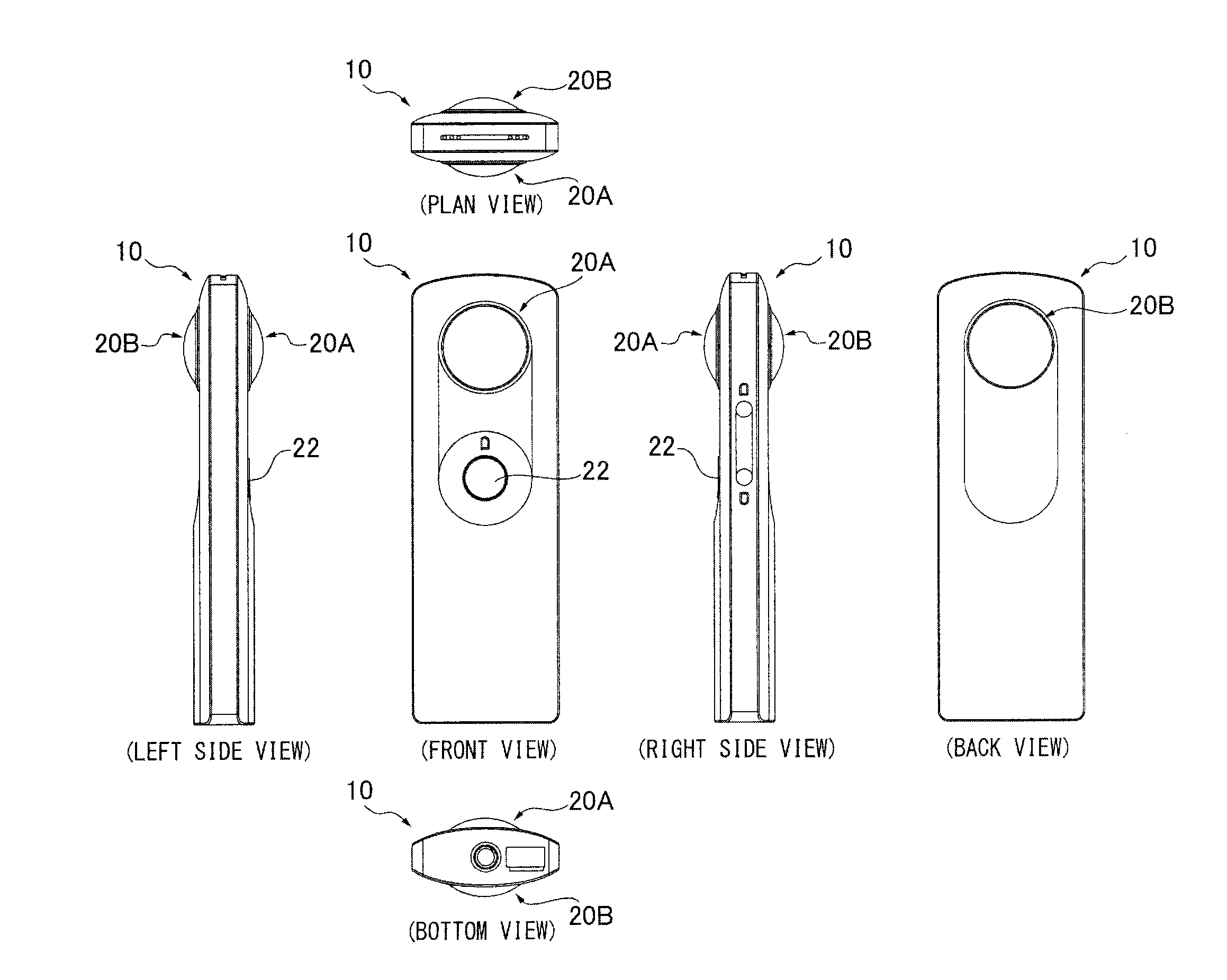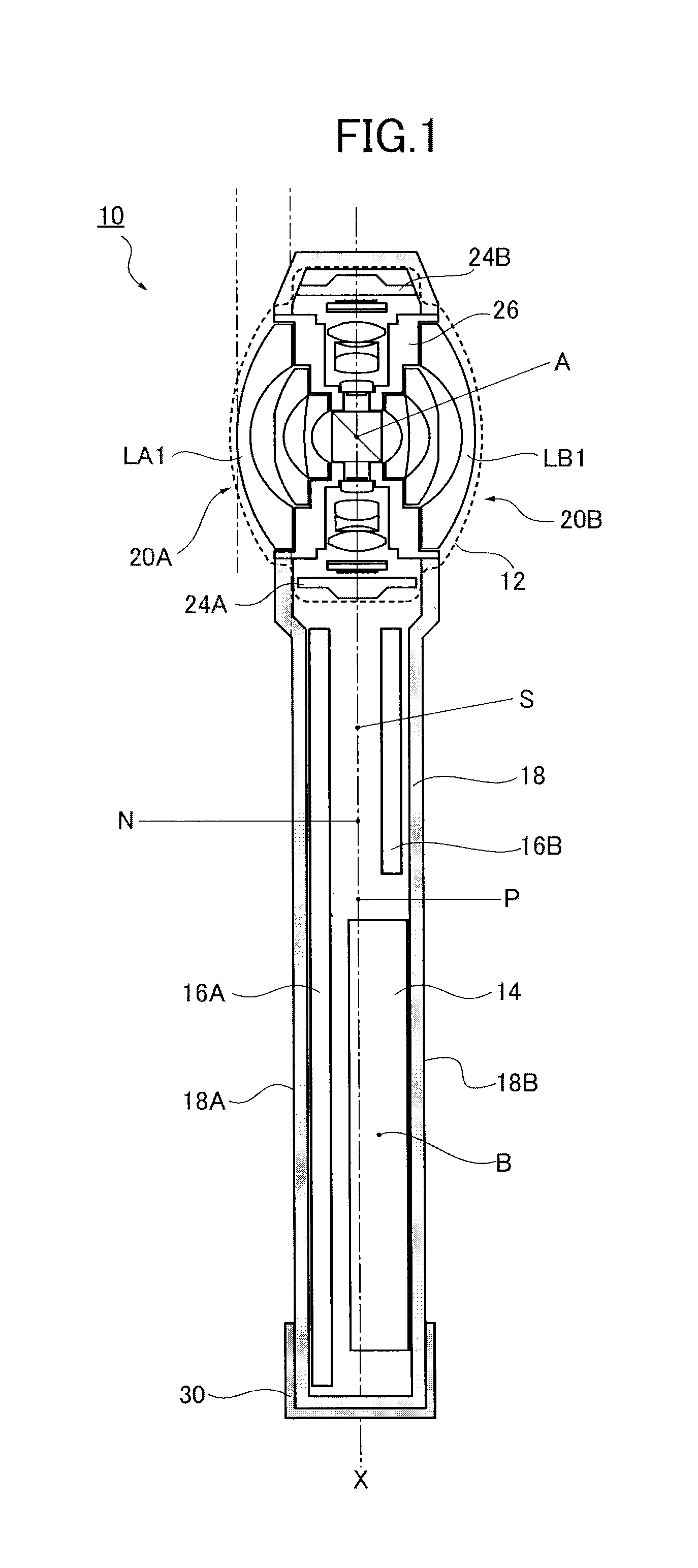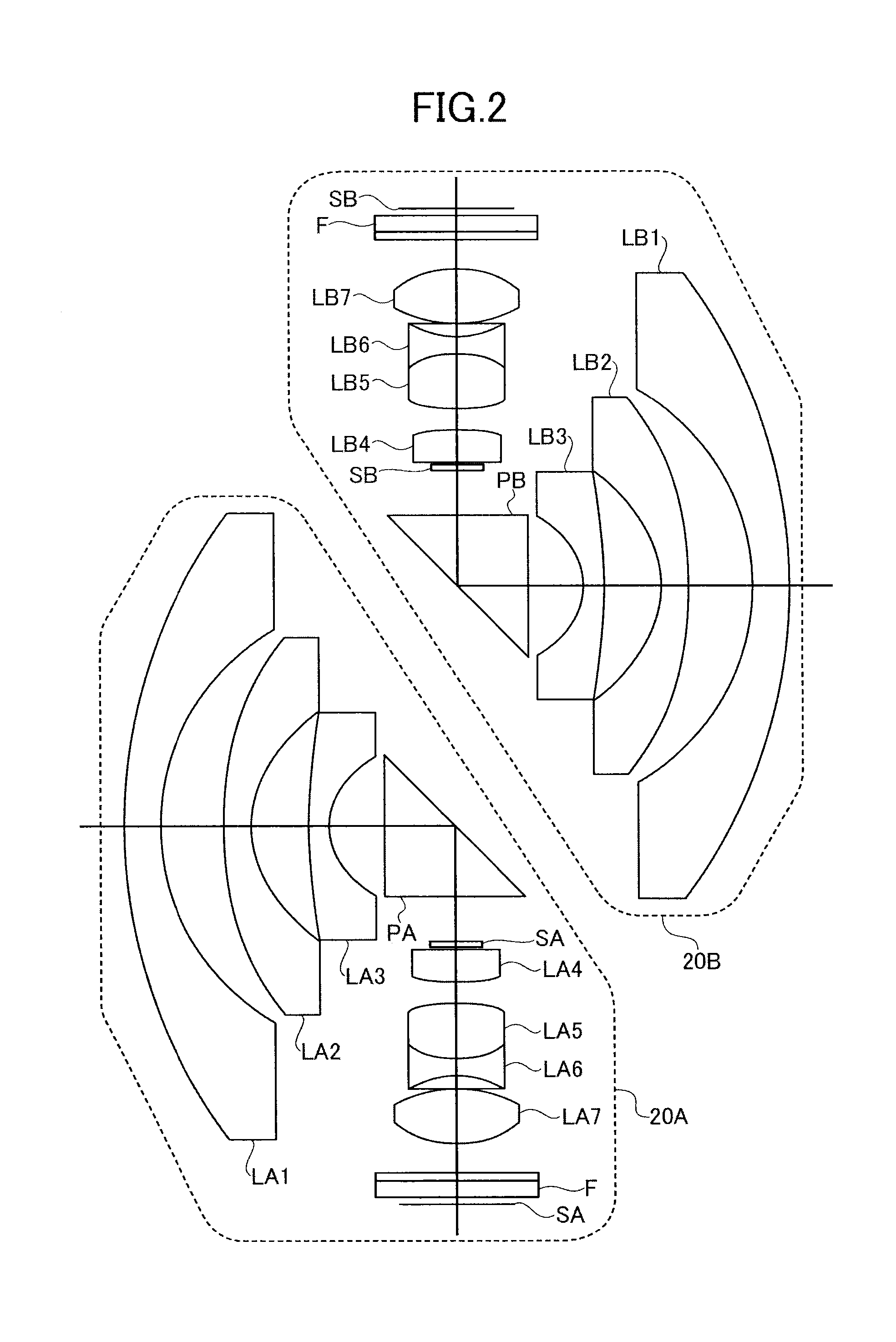Imaging system
a technology of imaging system and camera, applied in the field of imaging system, can solve the problems of easy damage to the lens when dropping the imaging system, increase in costs, and easy shake of the camera, and achieve the effect of improving the balance of the center of gravity
- Summary
- Abstract
- Description
- Claims
- Application Information
AI Technical Summary
Benefits of technology
Problems solved by technology
Method used
Image
Examples
embodiment 1
[0073]The omnidirectional imaging system 10 having a linear shape illustrated in FIG. 1 was obtained. Each of the image-forming optical systems 20A, 20B had seven lenses in six groups. In this configuration, the second lens LA2, LB2 from the object side and the seventh lens LA7, LB7 from the object side were a plastic lens. The plastic lens was formed by using a plastic resin material (specific weight 1.1) of E48R of Zeonex (registered trademark). The lens barrel 26 was formed by using a polycarbonate (PC+GF) material with glass having a specific weight of 1.3.
[0074]The curvature radius r and the effective diameter R of the first lens LA1, LB1 were 17 mm and 20 mm, respectively, and the sag amount h of the first lens LA1, LB I was about 3.25 mm. The projection amount of the first lens LA1, LB1 from the housing surface 18A, 18A was about 5 mm. The above condition 4 therefore was satisfied.
[0075]Measuring the gravity center A of the imaging body 12 in which the lenses LA1-7, LB1-7, ri...
embodiment 2
[0077]The omnidirectional imaging system 50 having a spherical shape illustrated in FIG. 4 was obtained. Each of the image-forming optical systems had seven lenses in six groups. In this configuration, the second lens LA2, LB2 from the object side and the seventh lens LA7, LB7 from the object side were a plastic lens of E48R of Zeonex (registered trademark). The lens barrel 26 was formed by using a polycarbonate (PC+GF) material with glass.
[0078]The curvature radius r and the effective curvature radius R of the first lens LA1, LB1 were 17 mm and 20 mm, respectively, and the sag amount h of the first lens LA1, LB1 was about 3.5 mm. The above condition 4 therefore was satisfied.
[0079]Measuring the gravity center A of the imaging body 52 in which the lenses LA1-7, LB1-7, right-angle prisms PA, PB, lens barrel and imaging elements were combined, the gravity center P of the entire imaging system 50 and the gravity center B of the battery 54, the distance AP was 15 mm, and the distance BP...
embodiment 3
[0080]The omnidirectional imaging system 10 having a linear shape illustrated in FIGS. 5, 6 was obtained by using the lens barrel 26 and the image-forming optical systems 20A, 20B similar to Embodiment 1. The curvature radius r and the effective diameter R of the first lens LA1, LB1 were 17 mm and 20 mm, respectively, and the sag amount h of the first lens LA1, LB1 was about 3.25 mm. The projection amount of the first lens LA1, LB1 from the housing surface 18A, 18A was about 5 mm. The above condition 4 therefore was satisfied.
[0081]Measuring the gravity center A of the imaging body 12 in which the lenses LA1-7, LB1-7, right angle prisms PA, PB, lens barrel 26 and imaging elements 24A, 24B were combined, the gravity center P of the entire imaging system 10 and the gravity center B of the battery 14, the distance AP was 47 mm, and the distance BP was 32 mm. The weight m of the imaging body 12 was 17 g and the weight M of the battery 14 was 25 g. Moreover, measuring the distance AN bet...
PUM
 Login to View More
Login to View More Abstract
Description
Claims
Application Information
 Login to View More
Login to View More - R&D
- Intellectual Property
- Life Sciences
- Materials
- Tech Scout
- Unparalleled Data Quality
- Higher Quality Content
- 60% Fewer Hallucinations
Browse by: Latest US Patents, China's latest patents, Technical Efficacy Thesaurus, Application Domain, Technology Topic, Popular Technical Reports.
© 2025 PatSnap. All rights reserved.Legal|Privacy policy|Modern Slavery Act Transparency Statement|Sitemap|About US| Contact US: help@patsnap.com



